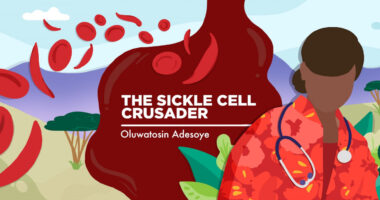Sancilio Completes Enrollment in Clinical Trial of Altemia as Treatment for Children with Sickle Cell Conditions

Sancilio Pharmaceuticals has completed enrolling patients in a Phase 2 clinical trial evaluating Altemia (docosahexaenoic acid) as a treatment for children with sickle cell anemia (SCA) and sickle cell disease (SCD).
The SCOT trial (NCT02973360) is aimed at finding an optimal dose of the therapy as well as evaluating its safety and effectiveness. Children aged 5 to 17 will be randomized to receive either Altemia or a placebo.
One of the four groups will receive 20 mg of Altemia per kg of body weight. A second group will receive 36 mg, a third 60 mg, and a fourth soybean oil as a placebo. The oral therapy is designed to be taken once a day.
The primary objective of the trial is to see whether Altemia lowers certain red blood cell fatty acids over four weeks, Sancilio said. It expects the study to be finished in August.
Research in the early 1990s suggested that some fatty acids decrease red blood cell destruction in mammals. Studies also showed that sickle cell patients have abnormally high levels of fatty acids in their red blood cells, white blood cells, platelets and plasma. The findings led to scientists surmising that certain fatty acids could play a role in the treatment of SCA and SCD.
In 2001, a small clinical trial showed that specific fatty acids could also reduce pain episodes in sickle cell patients. In addition, fatty acids can increase hemoglobin — the molecules in blood that carry oxygen — and reduce sickle cell patients’ anemia, organ damage and other complications.
Based on these findings, Sancilio designed Altemia to replenish the fatty acids destroyed by mutations of the beta thalassemia gene, which controls hemoglobin levels. The abnormalities are responsible for SCD, scientists say.
Altemia’s ultimate goal is restoring the fluidity — or normal movement — of red blood cell membranes. Sickle cell patients’ blood cells lose fluidity, triggering a cascade of events that leads to organ damage. By minimizing this damage, the premise is that Altemia can reduce sickle cell crises and death.
“We are very encouraged by the high retention rate and adherence to treatment seen thus far in the study,” Fred Sancilio, president and chief executive officer of Sancilio Pharmaceuticals, said in a press release. “This study will further our understanding of the impact of Altemia on SCD.”
“The faster than expected enrollment in this study highlights the intense interest and enthusiasm of the investigators, their staffs, as well as the patients and their families, in achieving this important step for our development program,” said Dr. Adrian L. Rabinowicz, Sancilio’s chief medical officer. “We look forward to reporting top-line results from the study early Q4 this year.”






